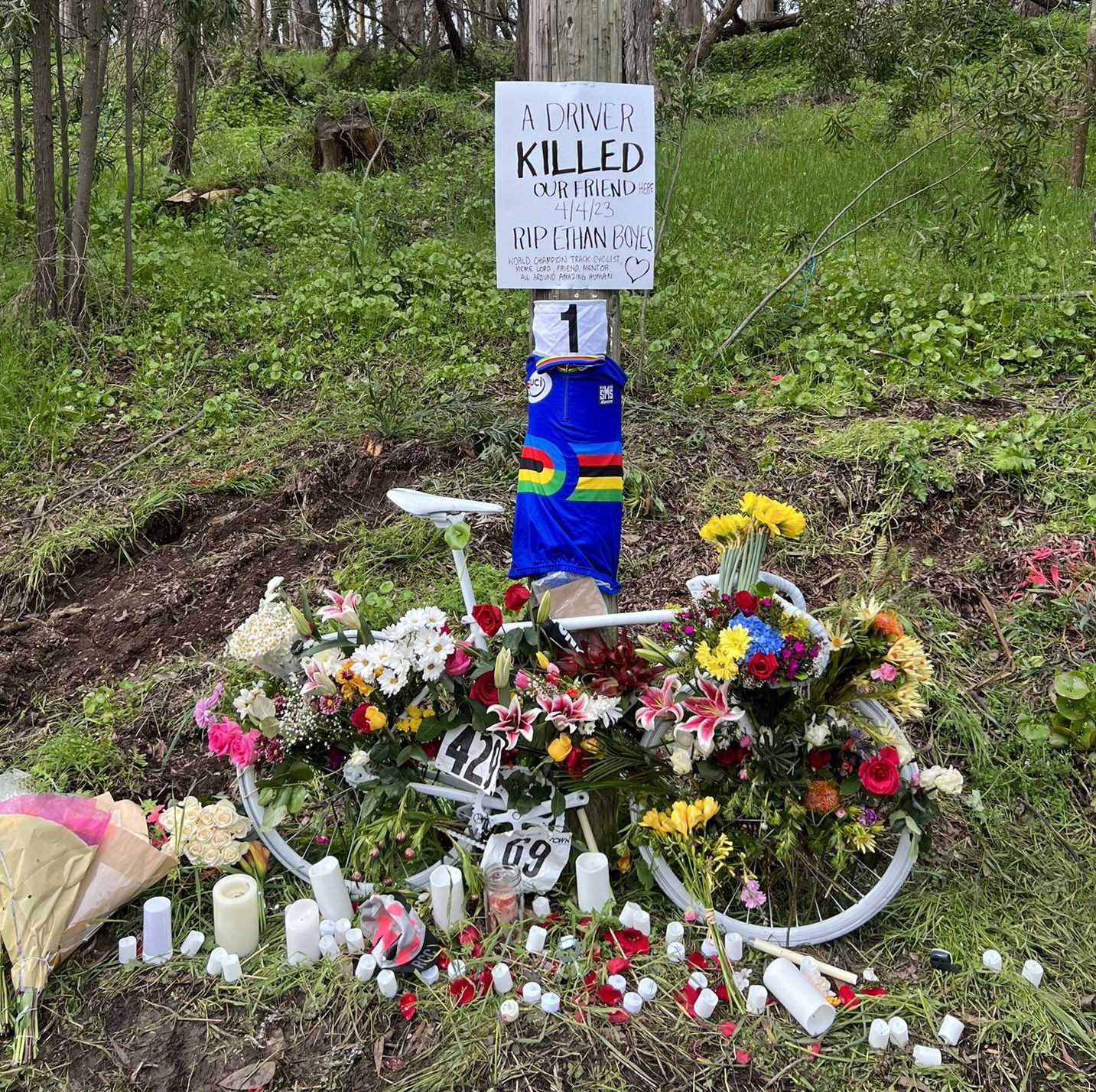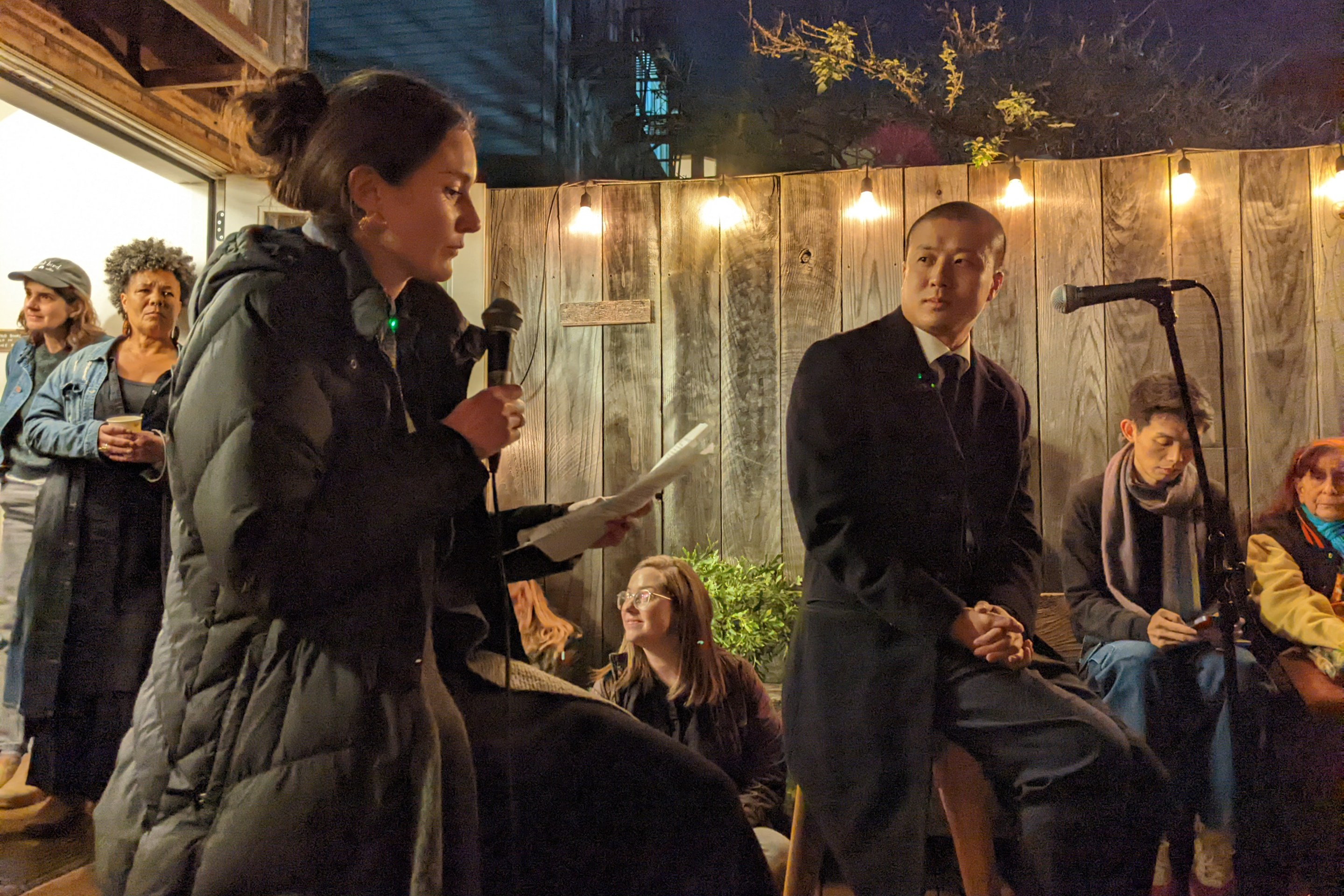Arnold Kinman Low, 81, pleaded guilty Monday to manslaughter and drunk driving, resulting in the death of cyclist Ethan Boyes on Arguello Boulevard in the Presidio. Low acknowledged that he was impaired and shouldn’t have been driving. He acknowledged killing Boyes due to deciding to drive while impaired. But the shocking issue is that the driver only had to plead guilty to a misdemeanor, which means that gross negligence was somehow not involved.
April 4th, 2023, Ethan Boyes was riding his bicycle in the Presidio in the middle of the day, as he often did. Low, heading the opposite direction at high speed, crossed the adjacent right-hand bike lane and hit the right-hand curb, and then swerved all the way left across the lanes of traffic, across the double-yellow line, and hit Ethan on the other side of the road, in the left-side bike lane. Ethan died at the scene.
For eight months there was no word on what happened. Was the driver still driving? Was the Boyes family going to reach closure? No one knew, and no one knew why we didn’t know. It turns out it was due to the unusual discretion of the federal prosecutor. But more on that issue later.
Federal Judge James Donato was mystified by the situation. The judge had even researched prior cases and could not find a single situation where a drunk driver who killed someone on federal land, like the Presidio, was only charged with a misdemeanor. The upset judge asked both the prosecution and the defense if there were any examples of such a case only being charged as a misdemeanor. Not a single example could be provided.
Judge Donato explained that his hands were tied. It is the prosecutor who decides the charges. The judge is only responsible for the verdict and the sentencing. The judge also explained that the legal system has to treat every case in the same way. The judge asked if it was due to the defendant being elderly, and whether if the next case involved a younger driver, would that person be unfairly charged differently. The prosecutor made it clear that the lesser misdemeanor charges were not due to the defendant's age.
Therefore Judge Donata asked the prosecution why then this drunk driving fatality case was being charged differently. The prosecutor replied that it was due to his discretion and the family did not object. No reason was given for treating this particular case differently from all the previous ones.
They acknowledged that as part of the plea Low will never drive again.
The sentencing will be on July 15th. The maximum sentence for vehicular misdemeanor manslaughter is one year. For drunk driving the maximum is six months (there is no parole in the federal system). And there can be a fine of up to $3,025.
Why this could be precedent setting
The judge made it clear that the legal system must treat everyone in the same way. That means the next time someone gets drunk and kills a person on federal land, they can claim that they too can only be charged with misdemeanors. It doesn’t matter if the next killer is younger, or different in any other way. They must, as Judge Donato stated, be treated in the same way.
This begs the question: has the prosecutor single handedly reduced the consequences of killing someone on federal property while drunk?
Prosecutor’s decision to not release any information for 8 months
After doing some research I found out why the Boyes case seemed to move so slowly compared to a similar case on Keesler Air Force Base in Biloxi from July 2021. This is really important because Low was able to continue driving for eight months after his DUI, which is very problematic. Turns out that federal prosecutors can follow one of two processes:
- criminal charges, arrest, grand jury, indictment, trial, sentencing
- grand jury, indictment, trial, sentencing
Info is only first made public during criminal charges or with the indictment. With the Biloxi case the prosecutor decided to start with criminal charges. That meant details were released the day after the crash. Also meant that based on evidence presented, the driver was immediately no longer allowed to drive. Right after the criminal charges the Biloxi case went to the grand jury and then it took a whole year to get an indictment and guilty plea. So federal grand juries seem to always take a really long time.
With the Boyes case the prosecutor decided to start with a grand jury and indictment. No info was initially released because the grand jury process is super secret. Even the driver was not informed of what was going on. And since the grand jury process is always slow it took eight months to get to the indictment, when info was finally made public and the driver was no longer allowed to drive.
So how does a prosecutor decide whether to start with the fast criminal charges (Biloxi) or the slow grand jury (Boyes)? Appears that the slow grand jury (Boyes) is the usual process because the feds want to make sure they have a solid case that they would win at trial. The fast criminal charges are usually just for complicated cases where people need to get people off the streets right away (Biloxi and recent shooting in Crissy Field). For the Boyes case the feds simply decided to use the usual slow method because they didn’t see the driver as a danger to society.
A good explanation of the federal process is available on the site LegalBegal.
It would be much better for federal dangerous driving incidents to always be prosecuted first with criminal charges instead of first going through a grand jury, so that dangerous drivers are immediately prevented from continuing to drive. It is very disturbing that the same prosecutor who used their discretion to charge the Boyes case driver with only a misdemeanor also decided to protect the drunk driver, but not the public, for eight months.
***
Michael Smith is a transportation and disability advocate living in San Francisco.





